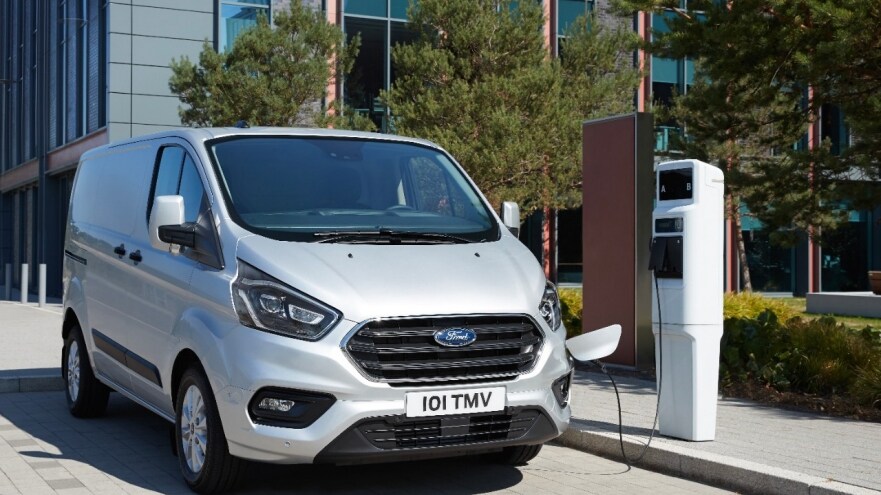- Ford develops smart algorithm that could support increased electric vehicle use, especially in cities, by identifying the most beneficial places to install charging stations
- Strategic approach – based on more than 1 million kilometres of driving data – is designed to allay driver concerns as regards wasteful journeys or running out of charge
- Planning the location of future electric vehicle charging stations is among pressing urban mobility issues examined by Ford in far-reaching Ford City Data Solutions Report
LONDON, April 8, 2019 – For many people and businesses, when it comes to switching to a fully electric vehicle, there is a concern that charging stations will not be there when they are needed.
Ford has now come up with a concept to help allay those concerns – using big data to identify the most beneficial places to locate new rapid-charging points.
Data scientists at the company have developed an algorithm, based on more than 1 million kilometres of driving data and including where vehicles actually stopped, to pinpoint the places that could help drivers integrate charging within their operating patterns, rather than making special journeys to out-of-the way locations.
Following in-depth analysis in Greater London, the team concluded that it would be possible to significantly improve access to on-the-go charging through deploying a relatively small number of strategically positioned rapid-charging stations.
“Being able to harness, analyse and leverage the huge amounts of data that is available through existing vehicle use can make a real difference to how easy we find it to get about in the cities of the future,” said John Scott, project lead, City Data Solutions, Ford Mobility. “We at Ford are committed to delivering smart vehicles for a smart world – including electric vehicles that will contribute to cleaner, quieter towns and cities. But we also want to try to use data to help improve investment efficiency into the necessary infrastructure to support that approach.”
Ford City Data Solutions Report
As part of its far-reaching Ford City Data Solutions Report, published in December 2018, Ford fitted 160 connected vans with a simple plug-in device to record journey data. * With the consent of participants, this generated more than 500 million data points, from more than 15,000 days of vehicle use, that was sent to the cloud for analysis.
It was from this data, captured over an eight-month period, that Ford’s Global Data Insight and Analytics team were able to identify where charging points would be most useful to a fleet. Although the vehicles in the trial were not electric, it was possible to understand their operation and forecast their ability to access charge points as if they were.
By seeing where vehicles travelled, where they parked and for how long, they could identify ways in which charging could be integrated within regular journeys, especially for businesses whose drivers might make multiple stops, for example, to make deliveries. It is an approach that Ford envisages could be extended to further cities, the data coming from connected vehicles, and enabling those cities to more effectively plan how to spend their infrastructure budget.
London fleet trial
From a separate but related London fleet trial involving 20 Transit Custom plug-in hybrid electric vehicle (PHEV) vans, Ford also found that fleets operated in pure electric mode for 35 per cent of their time on the road, increasing to 45 per cent in Greater London, and to 68 per cent in central London.
However, during the trial – based on 80,000 kilometres of PHEV fleet mileage – no use of public charging facilities was observed. Vehicles were instead charged either at depots or at home. Furthermore, on average, vehicles started the day with only 45 per cent charge, underlining the value that charging points en route could add. It was also found that operators became more adept at effectively charging vehicles, predominately at their depots, as time went on.
Rapid-charging stations can provide up to 80 per cent battery charge in 30 to 40 minutes. There are now more than a million electric cars in Europe and it is expected that worldwide, electric vehicles will account for the majority of all new car sales and a third of all fleets by 2040. But there are already concerns around a shortfall in the provision of charging points.
Previously, Ford announced how big data could help make cities safer – by highlighting where future traffic incidents might happen. And the company last week revealed an extensive range of new vehicles under a new Ford Hybrid banner. The comprehensive line-up of 16 electrified models announced in Amsterdam will cover everything from small family cars to SUVs and people movers – with a Mustang‑inspired performance SUV and fully electric Transit van on the way. Future all‑electric vehicles will be supported by the IONITY consortium that aims to build 400 stations in key European locations by 2020.
“Electrification changes the way we drive – and refuel – our vehicles. We realise that charging time and behaviour are fundamentally different for electric vehicles compared with traditional models, where refilling with petrol or diesel may take only 5 minutes,” said Scott. “In locating these additional charging points, we’ve attempted to take into account regular driving and stopping patterns so that topping up slots into drivers’ regular day-to-day activities.”
# # #
* Participants gave consent for their data to be collected and analysed and were invited to take part in the research through large fleet owners. Independent owner operators were recruited for the trial through a third-party service provider.

